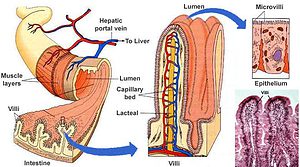Drug delivery encapsulated in tiny nanoparticles are thoroughly studied with great interest because they offer the chance to deliver treatments more efficiently. That’s not all though – with nanoparticle pills you can selectively target key areas and deliver drugs which otherwise wouldn’t be possible without using invasive methods. Take diabetes for instance – patients need to take shots of insulin on a regular basis and this is the only way the drug can be delivered effectively so far. A team of researchers at MIT have demonstrated, however, insulin absorption in the bloodstream of mice through nanoparticle pill oral ingestion. The findings could pave the way for other kinds of drugs becoming orally ingestistable, which are currently delivered only through invasive methods, like those targeting cancer.
“If you were a patient and you had a choice, there’s just no question: Patients would always prefer drugs they can take orally,” says Robert Langer, the David H. Koch Institute Professor at MIT, a member of MIT’s Koch Institute for Integrative Cancer Research, and an author of the Science Translational Medicine paper.
Of course, this is not the first research we’ve reported that discusses oral nanoparticle delivery. The key finding from MIT lies in the way the drugs bind to the intestinal inner wall. Previously, it was shown that when feeding on their mother’s milk, babies absorb antibodies contained in the milk to boost their own immune defense. These antibodies are absorbed through cell surface receptor called the FcR, which allows them to enter the blood stream.
The nano-pills of the future
Exploiting this biophysical processes, the researchers coated their nanoparticles containing the drug payload (insulin) with Fc proteins which attach themselves to the FcR receptors. Once attached to the receptors, the particles bring along the bio-compatible nanoparticles along with them.
After administering the nanoparticles oral to mice, the researchers measured 11-fold efficiency of insulin absorption in the bloodstream than nanoparticles devoid of the Fc protein coating.
“It illustrates a very general concept where we can use these receptors to traffic nanoparticles that could contain pretty much anything. Any molecule that has difficulty crossing the barrier could be loaded in the nanoparticle and trafficked across,” says Rohit Karnik, an MIT associate professor of mechanical engineering.
That’s very interesting, but it gets even more promising when you consider nanoparticle drug delivery can be used for treating all kinds of diseases that currently rely on invasive operations; i.e. cancer. The are numerous challenges to orally ingested nanoparticles though. Like a biological wall, the intestinal lining typically keeps drugs from reaching tumors via the blood stream.
“The key challenge is how to make a nanoparticle get through this barrier of cells. Whenever cells want to form a barrier, they make these attachments from cell to cell, analogous to a brick wall where the bricks are the cells and the mortar is the attachments, and nothing can penetrate that wall,” said Omid Farokhzad, director of the Laboratory of Nanomedicine and Biomaterials at BWH.
The present research illustrates that intestinal cells can be breached, proving oral nanoparticle delivery can be attained. Further animal tests and experiments using other types of drugs are planned.
“If you can penetrate the mucosa in the intestine, maybe next you can penetrate the mucosa in the lungs, maybe the blood-brain barrier, maybe the placental barrier,” said Farokhzad.










